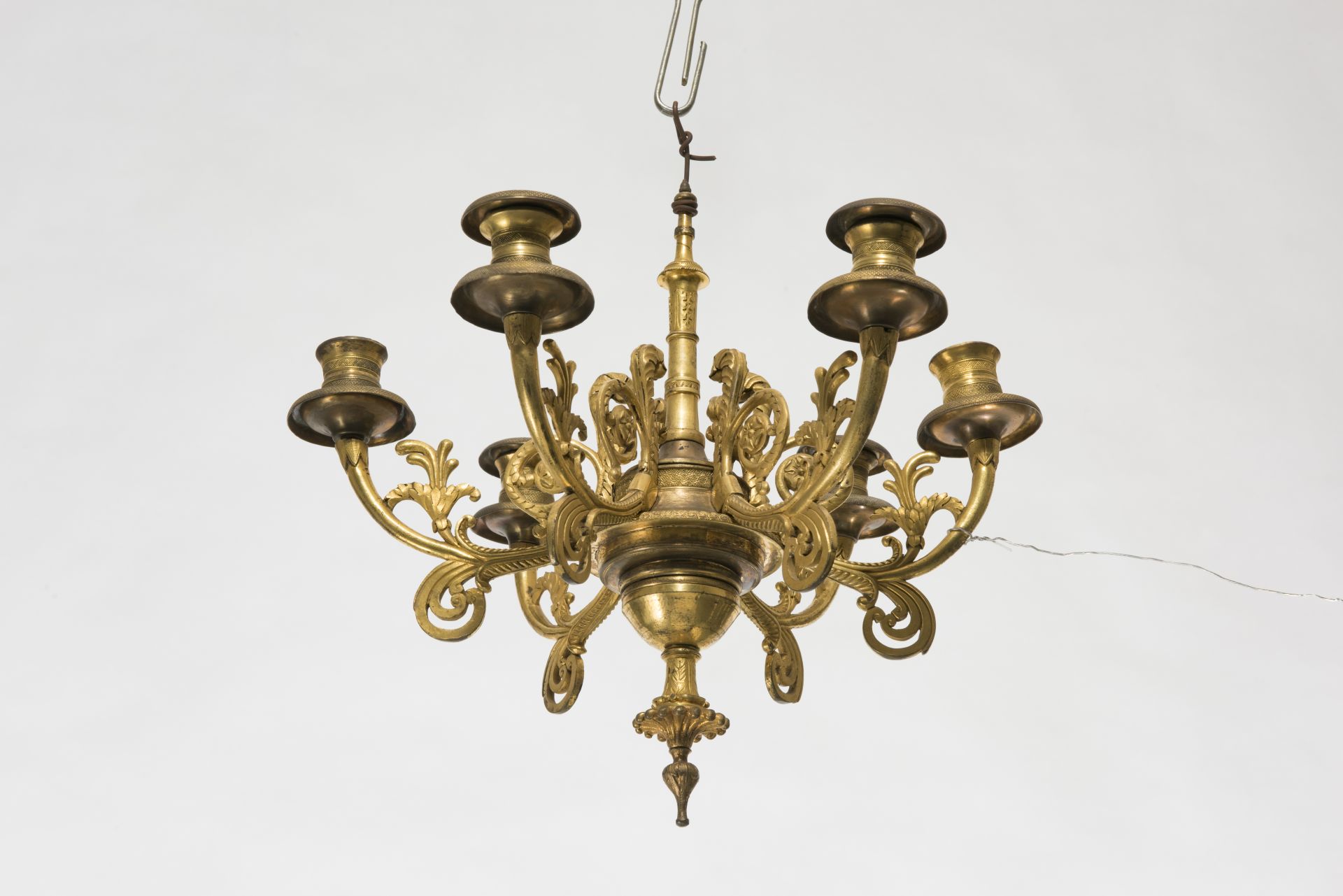National Museum of Lithuania
Inv. No. IM-4616
Address: Arsenalo str. 1, Vilnius
Time of origin: 1800–1849
Place of origin: France (?) / Russia (?)
Material, Technique: bronze, copper alloy: casting, cizeling, repoussé, embossing, engraving; remains of gilding
Dimensions: height – 56 cm
A small stem-type chandelier with six arms is preserved in the National Museum of Lithuania. The round box-shaped stem is decorated with engraved strips, which terminate beneath with a bud. The motif of twisted shoots decorates C-shaped arms. The drip pans to catch falling wax are repoussed from copper alloy. Like sconces for candles, they are decorated with engraved and embossed strips.
The spire-shaped upper part of the stem is atypical, rare and seems to have lost its functionality. So far, it is the only known chandelier in Lithuania without hanging loops. One can hypothesize that the lighting device was designed to be used in two ways: inserted into the support of similar style and used as a candelabra, or hung by the spire on the rope and used as a chandelier.
The ornamentation of the chandelier’s arm is close to the examples of the Empire chandelier’s fragments published by German architect Alexander Speltz in 1924 [2]. Based on the typologically, the rare chandelier can be dated to the first half of the 19th century and attributed to the Empire period.
Literature and sources:- Kačinskienė Klaudija, Mažeikienė Ona, XV–XX a. pr. apšvietimo priemonės, Vilnius: Lietuvos TSR istorijos ir etnografijos muziejus, 1980, p. 35.
- Speltz Alexander, Das empire-ornament, Leipzig: A. Schuman Verlag, 1924, tafel Nr. 3, 14.
- Valtaitė-Gagač Alantė, XVII a.–XX a. 4 dešimtmečio sietynų paveldas Lietuvoje: Daktaro disertacija, Vilnius: Vilniaus dailės akademija, 2015, p. 230.


